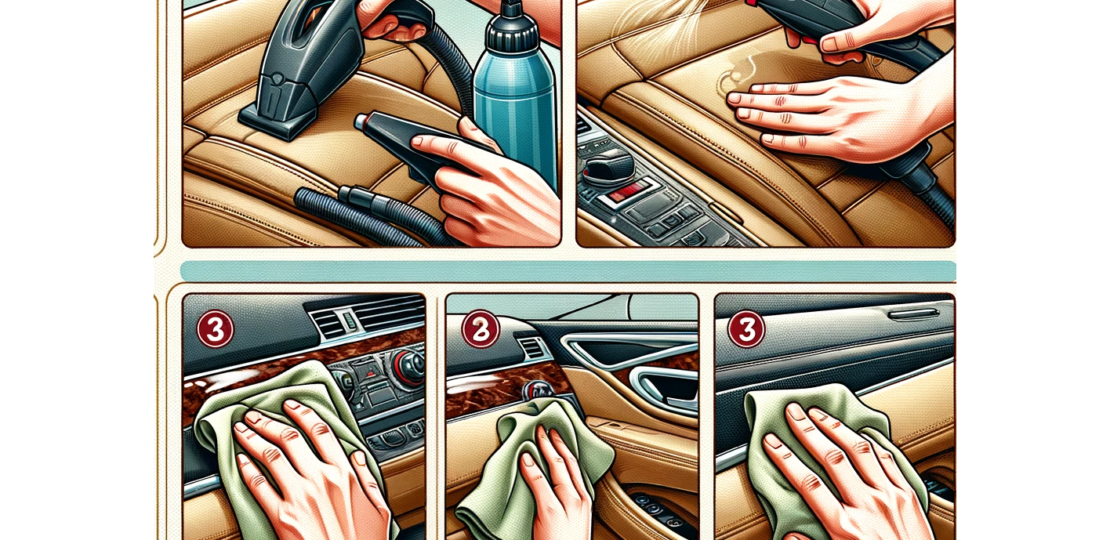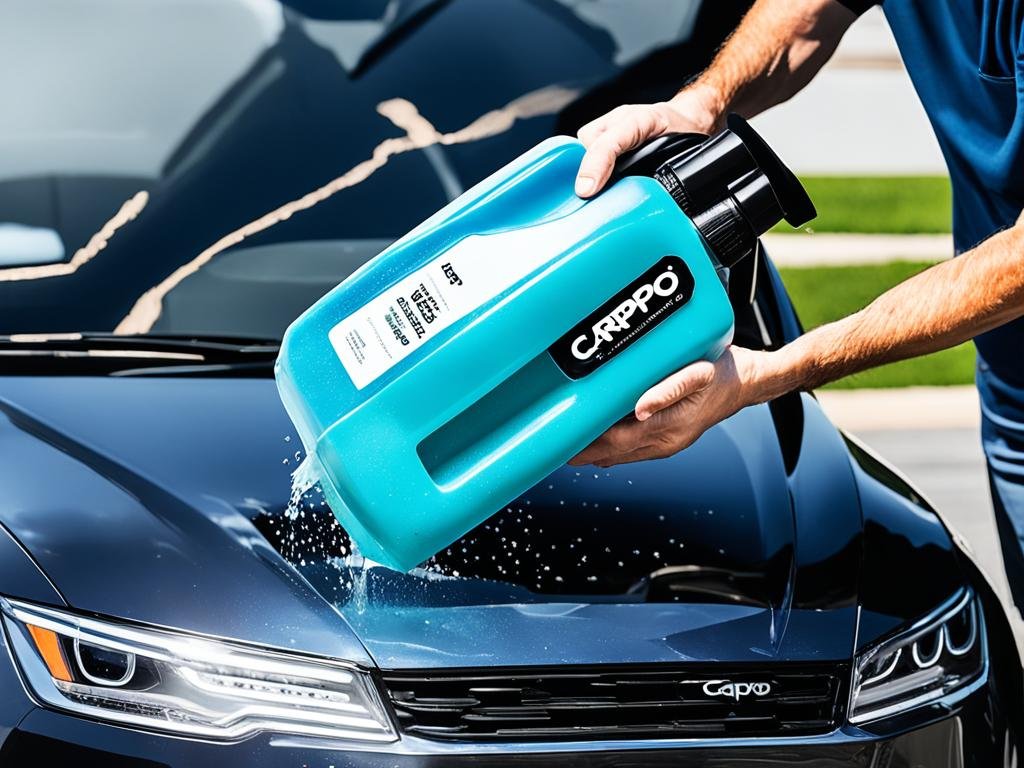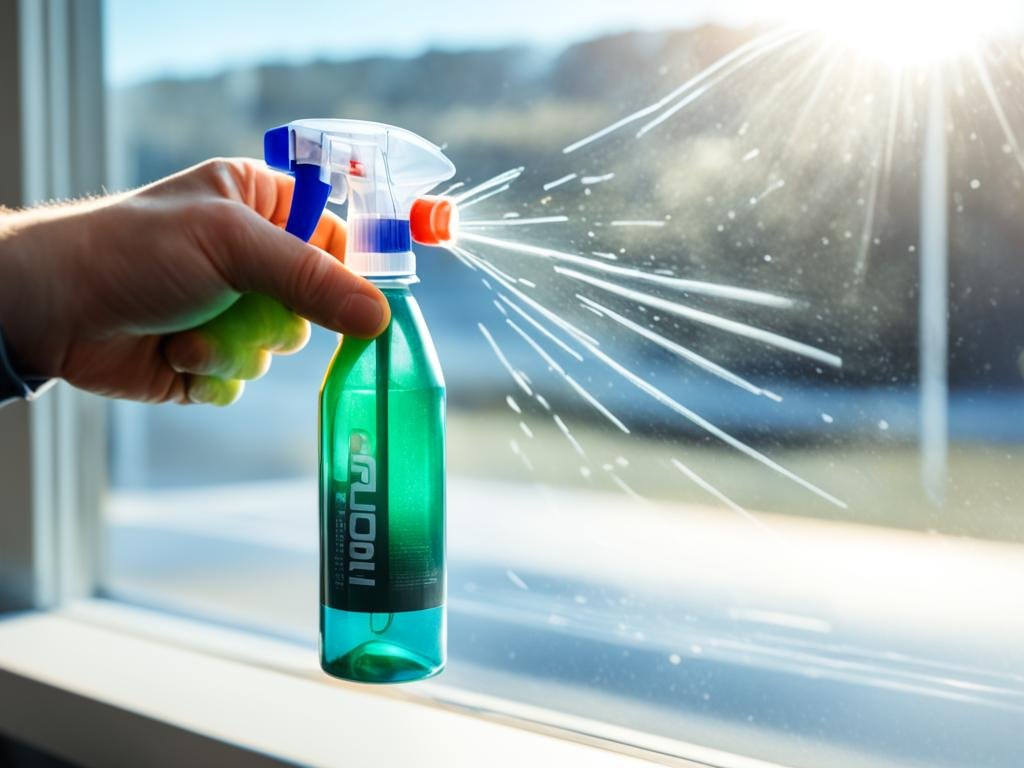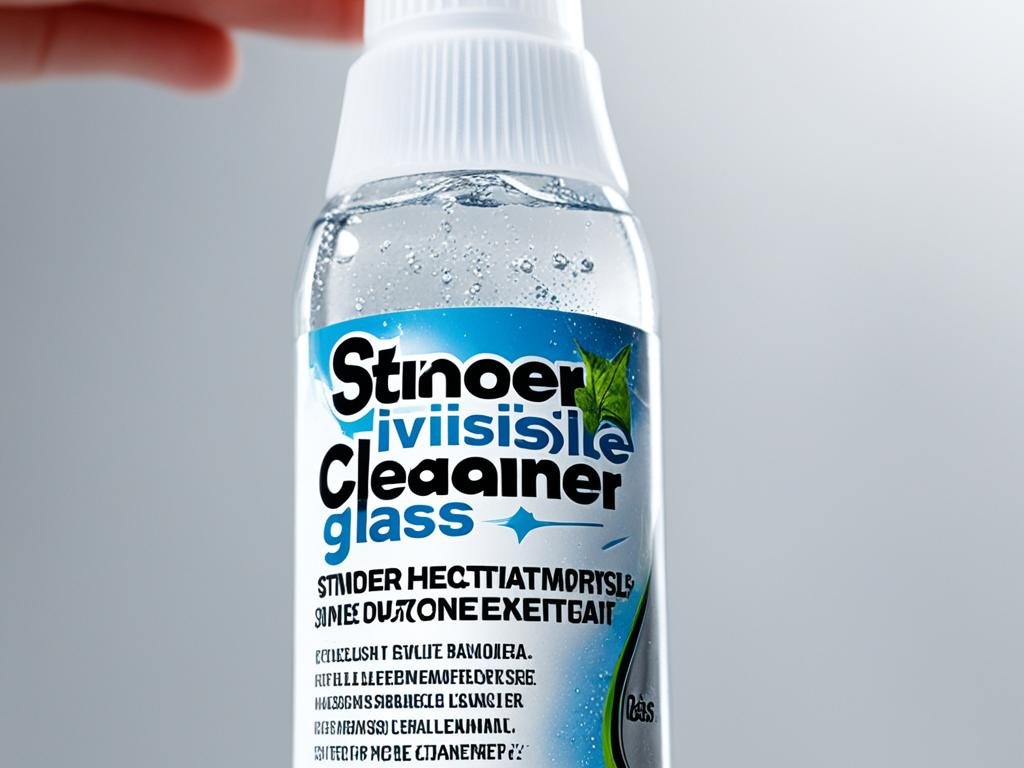How to Clean and Condition Car Leather Door Panels
April 11, 2024 | by Rosie Dazzlers

Serving Norfolk and Oxford counties, we bring the shine to you. From sedans to SUVs, experience unmatched convenience and quality right at your doorstep. Trust us to make your vehicle dazzle. Call now and let your car shine!
Say goodbye to dull and worn-out car leather door panels. At Rosie Dazzlers Mobile Auto Detailing, we specialize in the cleaning and conditioning of car leather, bringing back its original luster and extending its lifespan. With our expertise and high-quality products, your car’s interior will look and feel brand new.
Key Takeaways:
- Learn how to properly clean and condition car leather door panels to maintain their appearance.
- Discover the difference between leather and synthetic leather and choose the right products accordingly.
- Use the right products, such as leather cleaners, conditioners, and applicator pads, for effective cleaning and conditioning.
- Follow techniques, including scrubbing, wiping, and buffing, to ensure thorough cleaning and conditioning.
- Explore DIY options using household items like vinegar and coconut oil for cost-effective cleaning and conditioning.
The Difference Between Leather and Synthetic Leather
Determining whether a dashboard or door panel is made of leather or synthetic leather can be challenging. Leather dashboards are found in various vehicles, while many cars now feature stitched synthetic leather panels.
Synthetic leather, also known as leatherette, vinyl, or SensaTec, requires less maintenance as it is less susceptible to drying out. It is important to know the difference between these materials when choosing the right products for cleaning and conditioning.
Leather vs Synthetic Leather
Leather is a natural material made from animal hides, typically cowhide. It is luxurious, durable, and tends to develop a patina over time, enhancing its aesthetic appeal. Genuine leather requires regular cleaning and conditioning to maintain its softness and prevent drying and cracking.
Synthetic leather, on the other hand, is a man-made material designed to mimic the look and feel of real leather. It is often made from a combination of PVC (polyvinyl chloride) and polyurethane coated fabric. Synthetic leather, also known as leatherette or vinyl, is commonly used in vehicles due to its affordability and ease of maintenance.

Leatherette vs Genuine Leather
Leatherette, which is another name for synthetic leather, offers a leather-like appearance at a lower cost. It is often used as an alternative to genuine leather in car interiors due to its affordability and resistance to fading and cracking. However, it may not have the same durability or richness as genuine leather.
Genuine leather, on the other hand, is known for its superior quality and longevity. While it requires more maintenance, such as regular cleaning and conditioning, genuine leather offers a luxurious and timeless look to car interiors.
Maintaining Leather Dashboards
Regardless of whether your car has a leather or synthetic leather dashboard, regular maintenance is essential to keep it looking its best. Here are some tips for maintaining leather dashboards:
- Use a soft, non-abrasive cloth or microfiber towel to dust the dashboard regularly.
- Wipe up any spills or stains immediately with a damp cloth.
- Avoid using harsh chemicals or abrasive cleaners that can damage the leather surface.
- Apply a leather conditioner specifically formulated for automotive use to moisturize and protect the dashboard from drying out.
- Keep the dashboard out of direct sunlight whenever possible to prevent fading and cracking.
By following these maintenance tips, you can extend the lifespan of your leather dashboard and enjoy a luxurious and well-maintained car interior.
Choosing the Right Products for Cleaning and Conditioning
To properly clean and condition leather dashboards and door panels, it is essential to have the right products. Leather cleaner and leather conditioner are two key products that should be part of your car leather care routine. Applicator pads and microfiber towels are also important tools for achieving the best results. Here’s why these products are essential:
Leather Cleaner
A good leather cleaner is designed to effectively remove dirt, grime, and stains from your car’s leather surfaces. Look for a cleaner that is specifically formulated for use on dashboards and door panels. Apply the cleaner evenly across the surface using an applicator pad, working it in gently to lift away any dirt and debris. After cleaning, make sure to wipe away any excess liquid using a microfiber towel to avoid leaving streaks or residue.
Leather Conditioner
After cleaning, it is important to follow up with a high-quality leather conditioner. Leather conditioner helps replenish moisture, restore suppleness, and protect the leather from drying out and cracking. Apply the conditioner using a clean applicator pad, working it in evenly across the surface. Allow the conditioner to penetrate the leather for the recommended time, then use a microfiber towel to buff away any excess product, leaving a smooth and well-conditioned finish.
Applicator Pads and Microfiber Towels
Applicator pads are the ideal tool for applying leather cleaner and conditioner. Look for pads that are specifically designed for leather care to ensure a smooth and even application. Microfiber towels are excellent for removing excess cleaner or conditioner, as they are gentle on the leather and absorbent enough to leave a streak-free finish. When using microfiber towels, make sure to use a clean and dry towel to avoid introducing any dirt or debris.
Using the right products and tools is essential for achieving optimal results when cleaning and conditioning your car’s leather dashboards and door panels. Remember to always follow the instructions provided with the products and take extra care to clean and condition areas that are more prone to collecting dirt and grime from hands. Regular cleaning and conditioning, combined with proper care, will help preserve the beauty and longevity of your car’s leather interior.
Effective Techniques for Cleaning Leather Door Panels
When it comes to cleaning leather door panels, it’s essential to use effective techniques that will remove stains and maintain the integrity of the leather interior. Follow the steps below to ensure a thorough cleaning process:
- Apply a suitable cleaning agent: Start by selecting a cleaning agent specifically designed for cleaning leather. This will help remove dirt, grime, and stains without causing damage to the material.
- Scrub with a detailing brush: Using a soft detailing brush, gently scrub the leather door panel in circular motions. Focus on stained or dirty areas to ensure a deep clean.
- Wipe dry with a microfiber towel: After scrubbing, use a clean microfiber towel to wipe away any excess moisture. This will help remove dirt and stains from the surface of the leather.
- Deal with tough stains: For stubborn stains that don’t come off with regular scrubbing, a power drill with a soft white bristle head can be used. Be cautious and use light pressure to avoid damaging the leather.
- Thoroughly clean the entire surface: Make sure to clean the entire leather door panel, including hard-to-reach areas. Pay attention to edges, corners, and seams where dirt and grime can accumulate.
- Remove excess cleaning solution: After cleaning, use a clean microfiber towel to remove any excess cleaning solution from the surface of the leather. This will prevent residue buildup and ensure a clean finish.
- Condition the leather: To maintain its appearance and prevent cracking or drying, it’s important to condition the leather after cleaning. Choose a high-quality leather conditioner and apply it according to the manufacturer’s instructions.
- Store-bought and DIY conditioners: There are various store-bought leather conditioners available in the market. Additionally, you may also consider homemade conditioners using natural ingredients like beeswax or flaxseed oil.
Cleaning and conditioning leather door panels on a regular basis will help preserve their beauty and extend their lifespan. With these effective techniques, you can keep your car’s interior looking clean and pristine.
Recommended Leather Cleaning Products
| Product Name | Description |
|---|---|
| 1. Leather Honey Cleaner | A gentle cleaner specifically formulated for leather, effectively removes dirt and stains. |
| 2. Chemical Guys Leather Cleaner and Conditioner Kit | A comprehensive kit that includes a cleaner and conditioner, suitable for maintaining leather interiors. |
| 3. Meguiar’s Gold Class Rich Leather Cleaner and Conditioner | A two-in-one formula that cleans and conditions leather, leaving a rich, luxurious finish. |
| 4. Lexol Leather Care Kit | A complete kit with a cleaner, conditioner, and applicator sponge for convenient leather care. |
DIY Options for Cleaning and Conditioning
When it comes to cleaning and conditioning leather door panels, you don’t always need to rely on store-bought products. There are several homemade options that can effectively clean and condition your car’s leather interior.
1. Vinegar:
One of the most popular homemade leather cleaners is vinegar. To use vinegar for cleaning leather door panels, simply mix equal parts white vinegar and water in a spray bottle. Lightly spray the solution onto the leather surface and wipe it away with a clean cloth. Vinegar not only helps remove dirt and grime but also acts as a natural deodorizer.
2. Baking Soda:
Baking soda is known for its deep-cleaning properties and can be used to remove tough stains from leather door panels. Create a paste by mixing baking soda with water and apply it to the stains. Gently scrub the affected areas using a soft-bristled brush or a clean cloth. Afterward, wipe away the baking soda with a damp cloth and make sure to condition the leather to restore its moisture.
3. Rubbing Alcohol:
If you’re dealing with stubborn stains on your leather door panels, rubbing alcohol can be an effective solution. Apply a small amount of rubbing alcohol to a clean cloth and gently rub the stained areas. Follow up by cleaning the entire panel with a mixture of warm water and dish soap. Rinse off the soap solution and dry the leather thoroughly.
Along with these homemade cleaning options, it’s important to condition the leather to keep it soft and supple. Here are a few DIY conditioners that can help:
1. Coconut Oil:
Coconut oil is a natural conditioner that can restore moisture to dry leather and protect it from cracking. Apply a small amount of coconut oil to a clean cloth and gently rub it onto the leather surface. Allow the oil to be absorbed for a few hours or overnight, then wipe away any excess oil with a clean cloth.
2. Beeswax:
Beeswax can also be used as a homemade leather conditioner. Melt a small amount of beeswax and combine it with a carrier oil, such as olive oil or jojoba oil. Apply the mixture to the leather using a clean cloth, making sure to massage it into the surface. Leave it on for a few hours or overnight, then buff away any residue for a beautiful, conditioned finish.
3. Flaxseed Oil:
If you prefer a plant-based option, flaxseed oil is an excellent choice for conditioning leather. Apply a small amount of flaxseed oil to a clean cloth and evenly distribute it over the leather surface. Allow the oil to soak in for a few hours or overnight, then wipe away any excess oil with a clean cloth.
By utilizing these DIY options for cleaning and conditioning, you can keep your leather door panels looking pristine and well-maintained without relying solely on store-bought products.
Conclusion
Properly caring for your car’s leather door panels is essential for maintaining their appearance and extending their lifespan. Regular cleaning and conditioning using the right products and techniques can prevent issues like cracking, drying, and discoloration. By following a few car leather care tips, you can ensure your leather interior remains in top condition.
While DIY options can be cost-effective, they may require more time and effort. If you prefer professional results, consider availing the services of Rosie Dazzler Mobile Auto Detailing. With our expertise and the use of high-quality products, we provide professional car detailing services that will leave your leather door panels looking their best.
Remember, taking care of your car’s leather interior not only enhances its appearance but also contributes to a comfortable driving experience. So, make sure to incorporate regular cleaning and conditioning into your car maintenance routine for a beautiful and aesthetically pleasing leather interior.
FAQ
How do I determine if my car’s door panels are made of leather or synthetic leather?
To determine whether your car’s door panels are made of leather or synthetic leather, you can look for signs such as stitching or texture. Leather panels are commonly found in various vehicles, while many cars now feature stitched synthetic leather panels. Synthetic leather, also known as leatherette, vinyl, or SensaTec, requires less maintenance as it is less susceptible to drying out. Knowing the difference between these materials is important when choosing the right products for cleaning and conditioning.
What products do I need to clean and condition car leather door panels?
To properly clean and condition car leather door panels, you will need leather dashboard cleaner, leather conditioner, applicator pads, and microfiber towels. These products are widely available and suitable for use on interior leather surfaces. It is important to follow the instructions provided with the products and apply the cleaning and conditioning solution evenly across the door panels using an applicator pad. Door panels should be thoroughly cleaned, especially areas prone to collecting grime from hands. Buffing any excess liquid with microfiber towels is recommended.
How often should I clean and condition car leather door panels?
The frequency of cleaning and conditioning car leather door panels may vary depending on climate and sun exposure. Dashboards, in particular, may require more frequent cleaning and conditioning due to sun exposure. It is recommended to clean and condition leather door panels regularly to maintain their appearance and prevent cracking or drying.
What are some effective techniques for cleaning leather door panels?
Start by applying a suitable cleaning agent to the leather door panel and scrubbing with a detailing brush. Wipe dry with a microfiber towel to remove dirt and stains. For tough stains, a power drill with a soft white bristle head may be used. It is important to thoroughly clean the entire surface of the panel and remove any excess cleaning solution. Conditioning the leather is crucial for maintaining its appearance and preventing cracking or drying. Store-bought and DIY conditioners are recommended for moisturizing and protecting the leather.
Can I use DIY options for cleaning and conditioning car leather door panels?
Yes, there are homemade options for cleaning and conditioning car leather door panels. Vinegar can be sprayed on the panel and wiped away with a clean cloth to clean the surface. Baking soda can be used for deep cleaning, but conditioning is necessary afterward. Rubbing alcohol is effective for removing stains, followed by cleaning with a dish soap solution. DIY conditioners such as coconut oil, beeswax, and flaxseed oil can be applied to restore moisture and protect the leather.
Why is it important to clean and condition car leather door panels?
Proper cleaning and conditioning of car leather door panels are crucial for maintaining their appearance and prolonging their lifespan. Regular cleaning, using the right products and techniques, can prevent cracking, drying, and discoloration. Taking care of leather door panels ensures a comfortable and aesthetically pleasing car interior.
Source Links
RELATED POSTS
View all



